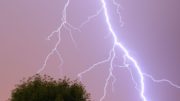Recently, our Solid Signal help desk got this very question several times in the space of a week. I’m not quite sure why, but when something like this happens, it’s usually due to a reddit post, instagram reel, or tiktok where someone raises doubt. Friends, that’s what I’m here for. Let me put your mind at ease.
Yes, this antenna will pick up HD signals.
Here’s the simplest way I can put this. Every TV antenna in the whole history of ever will pick up HD signals. Antennas made in the 1950s will pick them up. Small antennas will pick them up. Huge antennas will pick them up. If there’s a TV antenna sold in the United States, whether it was made in 1974 or 2024, it will pick up HD signals. Granted, some very very old antennas which aren’t made to pick up UHF signals won’t pick them up very well, but those would essentially be 70 year old antennas at this point. Not only that, they would still pick up some HD signals.
By the way, Yes, this antenna will pick up 4K signals. Or it would, if there were any.
There’s a new broadcasting system that’s being tested out there called ATSC 3.0 or NextGen TV. It may succeed, or it may not. It’s not a given. But if it does, then it will eventually allow you to get 4K over-the-air TV. As I write this article in 2024, there are –zero– 4K broadcasts that you can receive.
But here’s the thing, as an old coworker used to say. If there ever are 4K broadcasts, you’ll be able to get them with any antenna you buy today. You’ll be able to get them with the antenna you already have. An antenna that was made back when TV was only black and white will get 4K signals. Yes, really.
How could this possibly be true? It’s easier than you think
An antenna is really a very simple thing. It’s a metal stick. Really that’s all there is to it. Yes, it’s a metal stick that’s a particular size. That’s part of the magic. But any metal stick is going to be able to receive radio and television broadcasts. If it’s designed right, it will receive them very well. But if you are within 10-15 miles of the broadcast towers with a clear view of the sky, you will be able to get TV signals with a coat hanger. I’ve done it.
Really, the only thing that matters when it comes to TV broadcasting is the broadcast frequency. What you think of as channels 2-36 come in between 54 and 600 megahertz, roughly. There are some other things that broadcast in that range too, like FM radio. But that’s not super important right now. What’s important is that for every particular frequency you want to pick up, there’s a specific size of antenna that works best. That’s why those old-school-looking antennas like the one at the top of this article work so well. They’re actually a whole bunch of antennas of different sizes, all working together so you get the best result on every channel.
The frequencies used by TV broadcasting haven’t changed much since the 1940s. Originally, there were channels 1 through 13. Channel 1 disappeared quickly, and here’s why. Channels 14-83 were added in 1952, but slowly, those higher numbered channels were taken away so that cell phones could use those high frequencies. Today only channels 2-36 remain. And every antenna made since the 1950s picks them up. Period.
Your antenna doesn’t care if it’s HD or 4K or whatever.
As I said, antennas are pretty dumb pieces of equipment. They receive signals on a specific frequency. To a TV antenna, a black-and-white standard definition signal looks the same as a 4K signal. They take up the same 6MHz of bandwidth and they’re equally well received by an antenna. However, there are some limitations.
TV in the USA went digital in 2009. This plan was several years in the making and it’s the reason we have HD signals now. With the old analog signals, it would have taken 4 TV channels for just one HD signal. The tech of the day was able to put a full HD signal in the same space as an old analog signal. Today, it’s possible to put two full HD signals in that space, and if that NextGen TV becomes a reality, it will fit a full 4K signal in that space. But it’s still going to be the same range of frequencies.
However, when digital signals get weak, they act differently from analog signals. You might remember from your younger days that TV pictures got “snowy” if you were far from the towers. Today, the signal’s likely to look perfect up to the exact point where your TV can’t use it. Then it will freeze or get garbled. This all has to do with the way the tuners work and it’s not really the subject of this article.
This fact isn’t going to change. Period.
You might find some antennas advertised as “4K-Ready.” That’s true, in the sense that all TV antennas are 4K Ready. The only way that an antenna would stop working for 4K signals is if all TV broadcasting moved to different frequencies. That’s not going to happen because there’s no reason for it. Plus, a lot of other frequencies are already used for things like cell phones, Wi-Fi, police radios, and such.
So this article will still be true in five years, or even fifty years if TV still exists at that point. You can count on it. That’s why you should feel comfortable getting an antenna today from Solid Signal. We have all the best brands and the best prices. If you’re not sure what you need, call the experts at 888-233-7563. We’ll work with you to get you the antenna you need for your area. We’re here during East Coast business hours. If it’s after hours, just fill out the form below and we’ll get right back to you!





